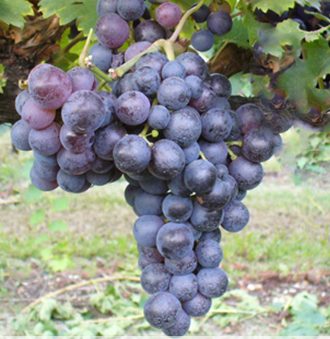Nero di Troia Grape
Black Grape

The Nero di Troia grape, a black grape, is grown in Apulia and Campania regions.
Nero di Troia is a native vine of Apulia that in recent years has been recovering the lost ground against other more well-known vines of the region such as Primitivo and Negro Amaro. Used, like most of the southern vines, mainly to make blending wine for the less alcoholic and structured northern wines of a not so long past. The revenge of the Uva di Troia starts from its name, object and land of easy and irreverent jokes now almost outdated for those who know the potential of this native Apulian vine and for those who appreciate the world of wine.
Regarding the name three hypotheses have come forward, the first has an “epic” scenario, as the Grape of Troy originates from the historic city of Troy in Asia Minor described by Homer in his stories epic. Legend has it that the vine arrived in southern Italy, and precisely along the Apulian coasts through the Greek colonizers more than two thousand years ago. Another hypothesis, less suggestive, indicates the Albanian town Cruja as the origin of the Grape di Troia, while more truthful remains the thesis that indicates the vine, originating from the characteristic Apulian city of Troia.
Characteristics of the wine
From the Nero di Troia grape, in the few cases when it is vinified in purity, wines of an intense ruby red color with deep purple reflections and excellent consistency are obtained. The nose is rich in red fruit such as blackberries, cherries, plums and figs, hints of spices such as black pepper and hints of cloves. The taste is a dry wine, supported by a good dose of alcohol, soft enough for the tannic component present but not impetuous and annoying, savory and quite fresh. Structured wine, quite balanced and intense, good persistence thanks to the very pleasant fruity return. Characteristics that can lead wines obtained with Nero di Troia also to medium-long aging.


